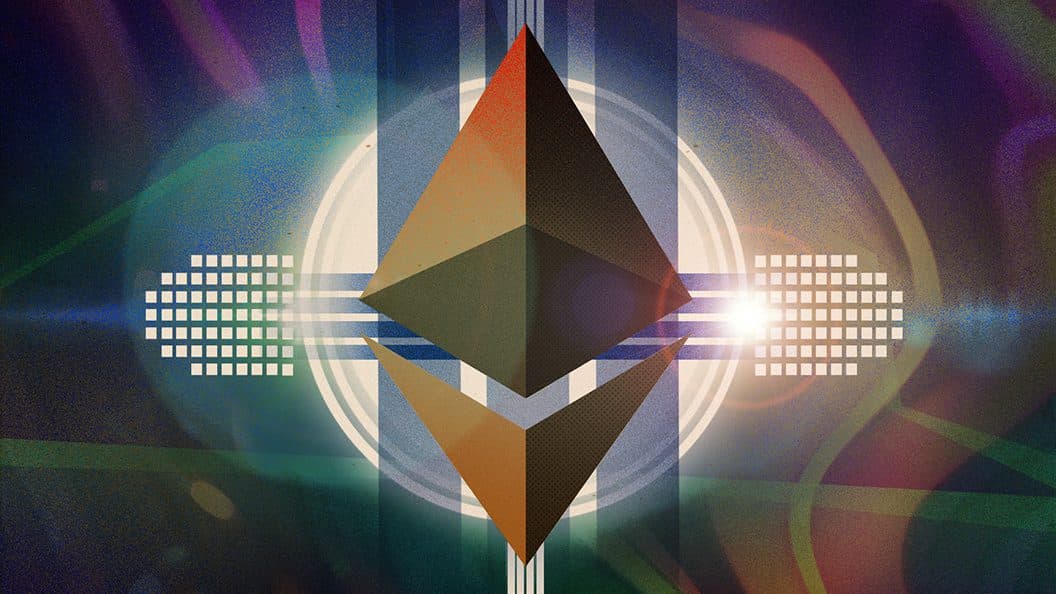Ethereum Steps Up as ‘Rails’ for New Capital Markets
The European Investment Bank’s issuance of a $100 million two-year bond on Ethereum shows its the rail of the future for issuance

Blockworks exclusive art by Axel Rangel
- Government debt is a growth industry so why not tokenize it?
- More blockchain-based bond issuances are on the way
The bond issuance by the European Investment Bank (EIB) via the Ethereum blockchain — and not a closed permissioned blockchain — shows Ethereum is the “rails for the new capital markets,” according to Seamus Donoghue, Vice President of the digital assets infrastructure company, Metaco.
Bond issuance on the blockchain via tokenization often gets forgotten about in the era of high-yield DeFi or volatile cryptocurrency markets.
But historically, the $280 trillion bond market, with its relative safety and stability, has been a critical backstop for many investment portfolios because their digitization is key to making digital assets go mainstream. To have this all be worthwhile, the protocol the tokenized bond is offered on needs to match up the issuer with liquidity.
Blockchain flavors
Blockchains come in two flavors: permissioned and permissionless. Permissioned chains, like R3 Corda or HyperLedger, are closed off to the general public. The nodes that run the chain are between members of an ecosystem. An example could be a consortium of banks running a blockchain between themselves.
In contrast, a permissionless chain, like Ethereum or Bitcoin, is open to the public for use and inspection. Critics of permissioned chains say they aren’t really blockchains because of their walled-garden nature. bond issuance on permissioned blockchains has been tried before, but it hasn’t caught on yet.
Although Gartner might say that “2021 is the year enterprise blockchain”, perhaps there’s a reason why when Consensys acquired JPMorgan’s permissioned blockchain technology Quorum, they started pushing a permissionless version and provided tools to port over to this new version.
“The EIB issuance wasn’t on one of the permission chains. It’s really obvious the market’s looked past that. And also these participants looked past that and went to where the liquidity was, which is on the public blockchains,” Donoghue said to Blockworks. “The point is they need to have an interoperable sort of framework so that they can raise money on a public chain where there’s demand and liquidity.”
Institutions want interoperability
While Donoghue says that Ethereum is enabling the ability to put the entire capital markets on the blockchain in a trustless, decentralized and distributed framework, the future isn’t exclusively tied to it.
Similar to how panelists on a recent Blockworks webinar viewed the future of programmable money as a “multi-chain future” with Ethereum at the center, supported by other interoperable protocols, Donoghue said that his institutional financial clients want interoperability.
“We deal with banks and their focus is not on a single channel. Ethereum is definitely the dominant one, but the view is it could be on Tezos, it could be on Polkadot. We even see interest in tokenization on the Stellar blockchain,” Donoghue said.
More blockchain-based bond issuances are on the way.
In a recent earnings call, Singapore’s DBS bank identified it as an area they are doubling down on in the future after the success of Azalea Investment Management Temasek private-equity-backed bond Astrea VI on the city’s iSTOX digital asset exchange.
Donoghue thinks many of them will be for public debt.
“If you’ve seen the amount of government debt that’s been issued of late, it’s a growth industry,” he said.






